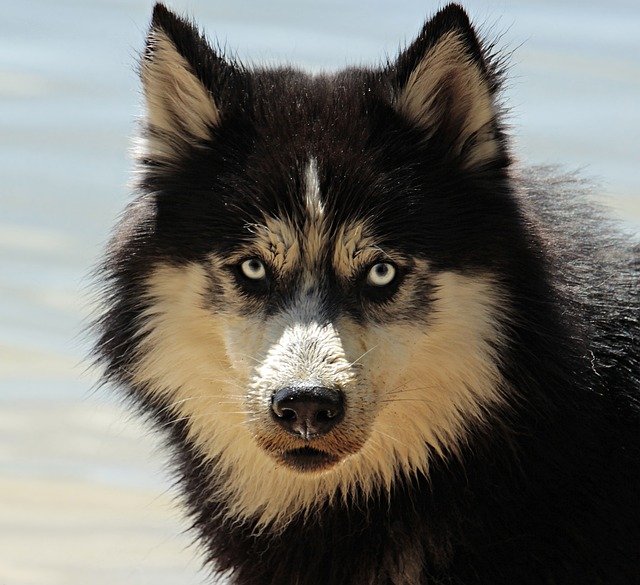Decoding the Tail Wags: The Subtle Art of Canine Emotional Expression
Imagine a world where every twitch, swish, and wag of a dog's tail holds a secret message. This isn't just the stuff of fairy tales - it's the fascinating reality of canine communication. As we delve into the intricate language of tail movements, we'll uncover a rich tapestry of emotions and intentions that our furry friends express daily.

The Evolution of Canine Tail Communication
The story of dog tail communication begins long before domestication. Wild canids, such as wolves and foxes, use their tails as visual signals to convey information to pack members. This adaptation likely evolved as a way to silently communicate over long distances or in dense vegetation where vocalizations might attract predators.
As dogs became domesticated, their tail communication became even more nuanced. Living alongside humans, they developed a broader range of expressions to interact with both their human families and other dogs. This co-evolution has resulted in a sophisticated system of non-verbal communication that continues to fascinate researchers and dog owners alike.
The Anatomy of a Wag
To truly understand tail communication, we must first examine the mechanics behind it. A dog’s tail is an extension of the spine, containing between 6 and 23 vertebrae depending on the breed. These vertebrae are controlled by a complex network of muscles that allow for precise movements in various directions.
The position and movement of the tail are governed by both voluntary and involuntary muscle contractions. This means that while dogs can consciously control some tail movements, others are automatic responses to emotional stimuli. This combination of conscious and subconscious control makes tail language a particularly honest form of communication.
Decoding the Different Types of Wags
Not all tail wags are created equal. The speed, amplitude, and direction of the wag can convey vastly different messages. Here’s a breakdown of some common tail movements and their potential meanings:
-
The High, Fast Wag: Often seen as a sign of happiness, this energetic wag typically indicates excitement and positive anticipation.
-
The Low, Slow Wag: This can be a sign of insecurity or submission. The dog may be trying to communicate that it’s not a threat.
-
The Stiff, High Tail: This posture often indicates alertness or potential aggression. It’s the canine equivalent of raising an eyebrow.
-
The Tucked Tail: A clear sign of fear or submission. The dog is trying to make itself appear smaller and less threatening.
-
The Circular Wag (Helicopter Tail): This full-body wag is often reserved for a dog’s favorite people and indicates extreme happiness.
The Role of Context in Tail Communication
While understanding different types of wags is crucial, it’s equally important to consider the context in which they occur. A wagging tail doesn’t always mean a happy dog - the same wag might have different meanings in different situations.
For example, a study published in the journal Current Biology found that dogs tend to wag more to the right when they see something they want to approach, and more to the left when confronted with something they want to avoid. This lateralization of tail wagging provides insight into a dog’s emotional state and intentions.
Moreover, tail communication doesn’t happen in isolation. It’s often accompanied by other body language cues such as ear position, facial expressions, and overall body posture. To accurately interpret a dog’s emotional state, one must consider all these factors together.
The Impact of Breed on Tail Communication
Breed differences can significantly impact how dogs communicate with their tails. Some breeds, like the Chow Chow or the Basenji, have tails that naturally curl over their backs, limiting their range of motion. Others, like the Greyhound, have long, whip-like tails capable of very expressive movements.
Tail docking, a controversial practice in some breeds, can also affect a dog’s ability to communicate effectively. Without the full length of their tail, these dogs may struggle to express themselves as clearly as their undocked counterparts.
Misinterpretations and Cultural Differences
Just as human body language can be misinterpreted across cultures, so too can canine tail language lead to misunderstandings. For instance, while many people interpret a wagging tail as a universal sign of friendliness, this isn’t always the case. A stiff, high-set tail wagging slowly can actually be a sign of an impending aggressive encounter.
These misinterpretations can sometimes lead to dangerous situations, especially when children are involved. Education about proper interpretation of dog body language, including tail movements, is crucial for promoting safe interactions between humans and dogs.
The Future of Canine Communication Research
As our understanding of canine cognition and emotion grows, so too does our appreciation for the complexity of their communication methods. Emerging technologies, such as high-speed cameras and motion capture systems, are allowing researchers to analyze tail movements with unprecedented precision.
Some scientists are even exploring the possibility of creating devices that could interpret a dog’s tail movements and translate them into human language. While such technology is still in its infancy, it hints at the potential for even deeper interspecies understanding in the future.
Conclusion: The Tail Tells a Tale
The language of tail wags is a testament to the rich emotional lives of our canine companions. By learning to read these subtle signals, we can deepen our bond with dogs and better understand their needs and feelings. As we continue to unravel the mysteries of canine communication, we’re reminded of the intricate and beautiful ways in which animals express themselves.
So, the next time you see a dog wagging its tail, remember - you’re witnessing a sophisticated form of emotional expression, one that has been refined over thousands of years of human-canine coexistence. In the subtle movements of a dog’s tail lies a world of meaning, waiting to be understood by those who take the time to learn this unique language.





